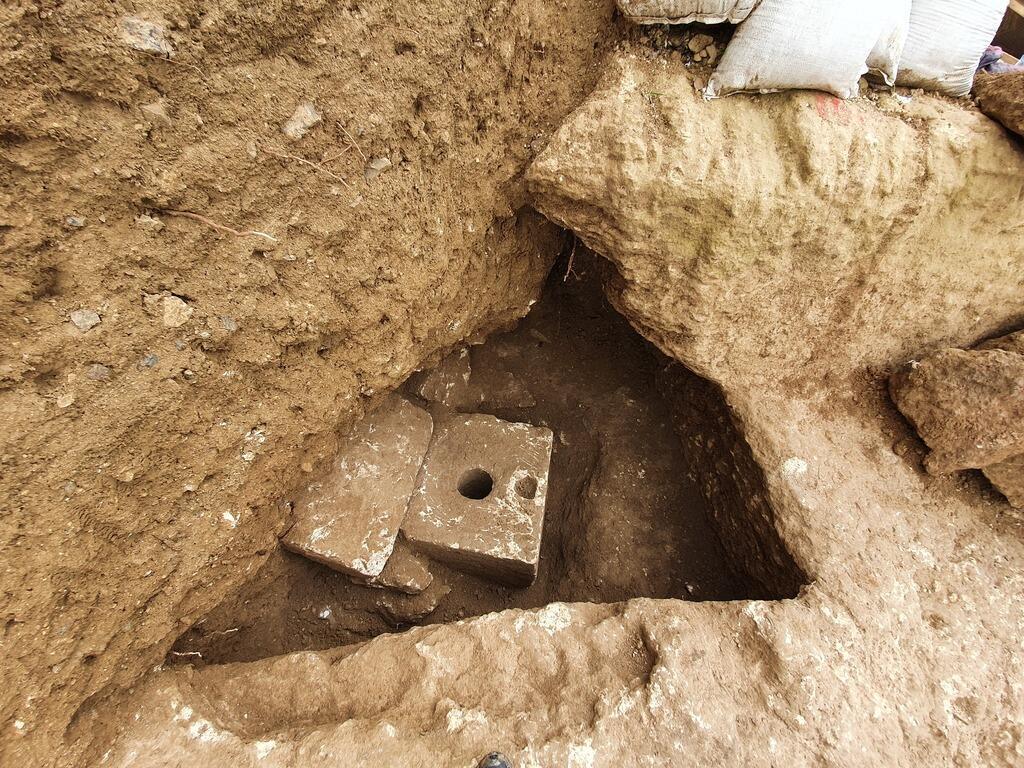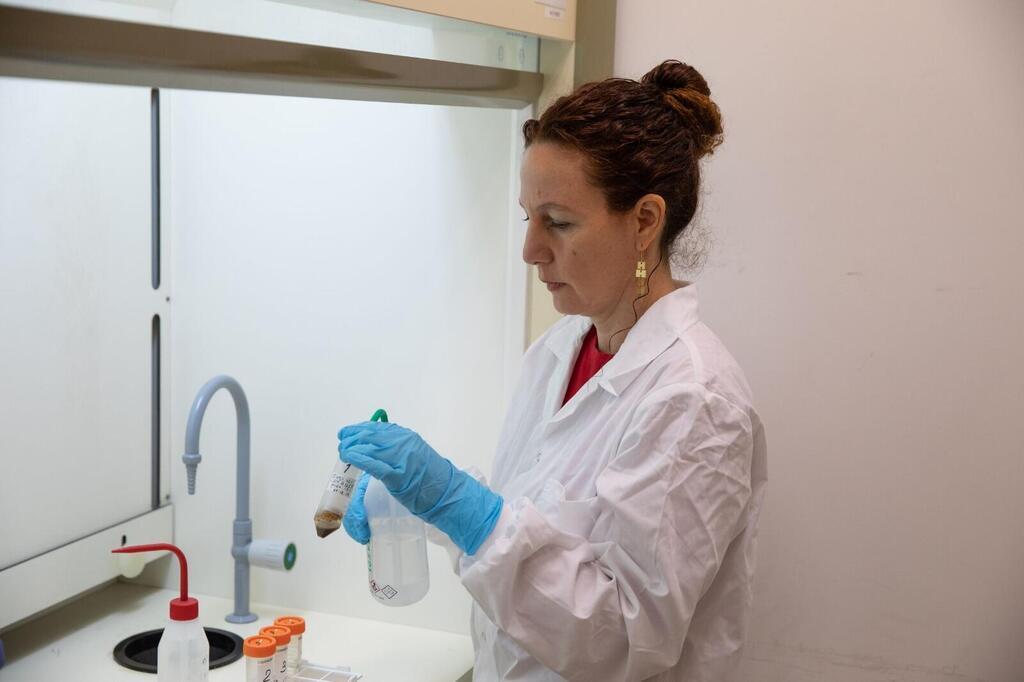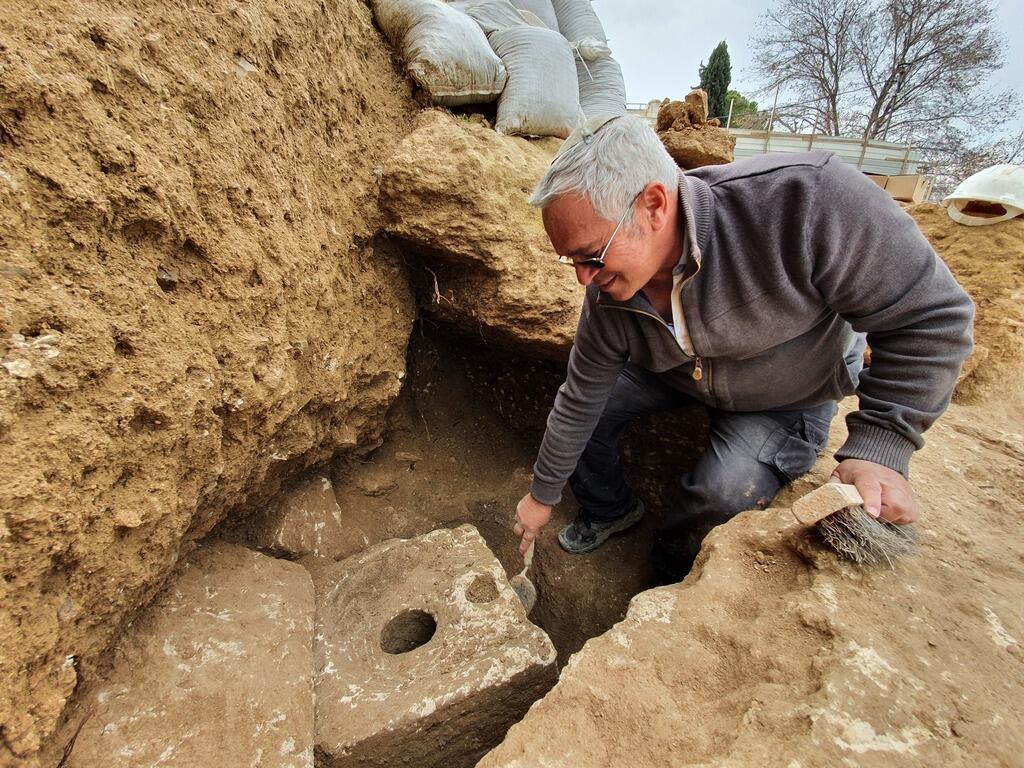Jerusalem’s elite suffered from an infectious disease at some point during the First Temple era, analysis of a cesspit beneath the lavatory in the garden of a luxury estate uncovered at the Armon Hanatziv Promenade revealed.
A new study by Tel Aviv University and the Israel Antiquities Authority (IAA) exposed the remains of 2,700-year-old intestinal worm eggs below the stone toilet at the magnificent private estate.
3 View gallery


Ancient lavatory uncovered in a Jerusalem archeological dig
(Photo: Israel's Antiquity Authority )
The egg remnants belong to four different types of intestinal parasites: roundworm, tapeworm, whipworm, and pinworm. According to the researchers, the stone toilet seat was in the estate’s “restroom,” and the presence of the worms indicates that even the wealthy residents of Jerusalem at that time suffered from diseases and epidemics.
The study was led by Dr. Dafna Langgut of Tel Aviv University’s Jacob M. Alkow Department of Archaeology and Ancient Near Eastern Cultures, director of the Laboratory of Archaeobotany and Ancient Environments at the Sonia & Marco Nadler Institute of Archaeology and the Steinhardt Museum of Natural History. She collected sediment samples from the cesspit, and in her laboratory, she chemically extracted the parasite eggs, scrutinized them under a light microscope, and identified them.
3 View gallery


Dr. Dafna Langgut director of the Laboratory of Archaeobotany and Ancient Environments at Tel Aviv University
(Photo: Israel's Antiquity Authority )
“The findings of this study are among the earliest observed in Israel to date,” Langgut noted. “These are durable eggs, and under the special conditions provided by the cesspit, they survived for nearly 2,700 years. Intestinal worms are parasites that cause symptoms like abdominal pain, nausea, diarrhea, and itching. Some of them are especially dangerous for children and can lead to malnutrition, developmental delays, nervous system damage, and, in extreme cases, even death.”
Langgut believes that intestinal disease at the time might have been due to poor sanitary conditions that caused fecal contamination of food and drinking water, or it might have been due to a lack of hygiene awareness, such as a failure to wash hands.
Other possible sources of infection were the use of human feces to fertilize field crops and the consumption of improperly cooked meat. In the absence of medicine, recovery from intestinal worms was difficult to impossible, and those infected could suffer from the parasites for the rest of their lives. Therefore, it is quite possible that the findings of the study indicate a bothersome and long-lasting infectious disease that affected the entire population.
Langgut points out that these parasites still exist today, but the modern Western world has developed effective diagnostic means and medications, so they do not turn into an epidemic.
3 View gallery


Archiologist Ya’akov Billig near the ancient toilet uncovered in a Jerusalem dig
(Photo: Israel Antiquity Authority )
Ya’akov Billig, the director of the excavation on behalf of the IAA, explained that the uncovered royal estate dates back to the mid-7th century BCE, the late Iron Age. Splendid stone artifacts of extraordinary workmanship were found at the site, such as decorated stone capitals in the Proto-Aeolian style of a quantity and quality not yet observed in ancient Israel.
Adjacent to the mansion was a spectacular garden with a breathtaking view of the City of David and the Temple Mount. It was here, along with the remains of fruit and ornamental trees, that the cesspit sampled by Langgut was found. It was capped by a square limestone installation with a hole in its center, identified as a toilet’s drop hole.
For Dr. Langgut, this was an opportunity to apply a field of research called archeoparasitology that she had begun to develop in her laboratory. In this field, researchers identify microscopic remains of intestinal worm eggs to learn about the history of diseases and epidemics. This area provides new information regarding human hygiene, lifestyle, and sanitary conditions.
Langgut and Billig were not surprised by the recovery of a toilet in the estate’s prestigious garden. “Toilet facilities were extremely rare at that time and were a status symbol – a luxury facility that only the rich and high-ranking could afford.”
Eli Escozido, director of the IAA, said that “the research manages to touch on the finest details of everyday life in antiquity; it is now possible to extract fascinating information from materials that we previously did not have the tools to handle scientifically. Today, archeological research is reaching remarkable achievements and leading to a better understanding of past lifeways – an understanding, it seems, that will only continue to evolve.”
Langgut concluded by pointing out that “studies like this one help us document the history of infectious diseases in our area and provide us with a window into the lives of people in ancient times.”

